Cabbage is a leafy green, red, or white biennial plant grown as an annual vegetable crop for its dense-leaved heads. This cruciferous vegetable belongs to the Brassica family and is round or oval in shape. It consists of soft, light green, or whitish inner leaves covered with harder and dark green outer leaves. It belongs to the group of cole crops, which means that it is closely related to broccoli, cauliflower, and Brussels sprouts. It is widely used throughout the world and can be prepared in several ways. Most commonly, it can be included as either a cooked or raw part of many salads. Types of cabbage include:
- Cannonball Cabbage or Green Cabbage
- Bok Choy
- Fun Jen
- Choy Sum
- Tokyo Bekana
- Napa Cabbage
- Savoy Cabbage
- January King Cabbage
- Black Italian cabbage
- Red Cabbage
- Sprouting Napa
- White cabbage
- Flat cabbage
- Conehead/Pointed cabbage
- Michihili napa cabbages
- Red Chinese cabbage
- Brussels sprouts
- Black Italian cabbage
- Jaroma cabbage
- Kohlrabi
- Gonzales Cabbage
- Taiwanese Bok choy
Cannonball cabbage

Green cabbage, also known as cannonball cabbage is a leafy green vegetable that grows in tight, spherical heads, which gives it its nickname of cannonball cabbage.Green cabbage has numerous pale green leaves that are thick and broad with prominent veins and a slightly waxy finish. The core of the cabbage is generally removed before preparing as it can be too tough to eat. Cabbage can be eaten raw, cooked (braised is especially good), pickled, or fermented.
Bok choy

Bok choy, also known as pak choy or pok choi, is a type of Chinese cabbage, consisting of a clustered base of thick crunchy, slightly curved stems and oval-shaped leaves. The dark green leaves are crisp and pliable with prominent white veins spanning across the surface. When raw, Bok choy has a crunchy, slightly fibrous consistency with a sweet, green flavor mixed with notable cabbage nuances and a mild mustard-like bite. When cooked, the texture softens into a tender consistency, and the flavor mellows into an earthy, mild taste.
Fun Jen

Fun Jen also known as Wong Bok Fun Jen, is known for its frilly leaves and delicate, tender texture. This cabbage grows in conical heads and has loosely clustered stems that connect into semi-spreading, frilly leaves.The elongated and slender, white stems are firm with a crunchy and aqueous consistency. The bright green to yellow-green leaves are tender and have ruffled edges with a soft, wrinkled texture across the surface. Both the leaves and stems of Fun Jen are edible raw or cooked and are delicate and crisp with a mild, sweet, and subtly tangy flavor.
Also Read: Different Types of Kale Varieties
Choy sum
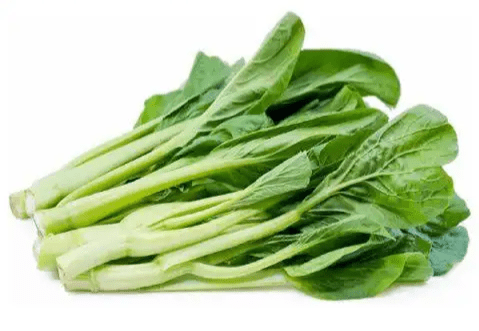
Choy sum also referred to as Chinese flowering cabbage is characterised by yellow flowers borne on slightly fleshy stems. The oval leaves have slightly serrated margins and can be light or dark green with pointed tips. Unlike many other cabbages, it never forms compact heads and it is more similar to bok choy. Choi sum’s stalks range from white to pale and lime green. Choi Sum has a mildly cruciferous flavor reminiscent to young broccoli and spinach. It can be used as a salad green, a cooking green or a pickled vegetable.
Tokyo Bekana

Also known as Small Chinese cabbage, Tokyo Bekana is a fast-growing variety that can be harvested at multiple stages of maturity, including microgreen, baby leaf, petite leaf, and at full size. This cabbageis often mistaken for lettuce due to its similarities in flavor and appearance.The large leaves have a frilly consistency with ruffled edges and are green with prominent white veins spanning across the surface. Its spinach-like flavor with mild pepper nuances make it best suited for both raw and cooked applications such as sautéing, steaming, and stir-frying.
Napa Cabbage

Napa cabbage is most popularly used in Asian cuisine and is also known by many different names, including Hakusai and Wombok is is a densely packed type of cabbage with large and elongated head. The bright white stems are thick, lightly grooved, and smooth, tightly clustered at the base forming basal rosettes. Attached to the fibrous stems are crinkled, delicate, and curved leaves that range in color from pale green to yellow and are covered in white veins that extend across the surface. Napa cabbage is best suited for both raw and cooked applications such as braising, stewing, grilling, stir-frying, and boiling.
Savoy Cabbage
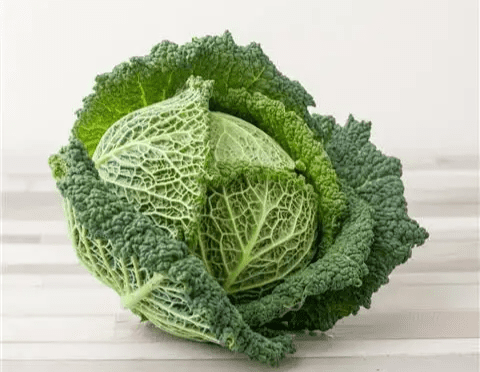
Also known as Choux de Savoie in French, Cavolo Verza in Italian, Milan cabbage, and Lombardy cabbage, Savoy cabbage is a winter vegetable that is known for its sweet, earthy flavor and unusual texture.The outer leaves are the toughest and firm, and heavily veined with dark green to light green coloring. The inner leaves are more tender, crisp, and delicate with pale green, yellow, to white hues. Savoy cabbage is crunchy with a slight elastic consistency and is mild, earthy, and sweet with subtle musky undertones.
January King Cabbage
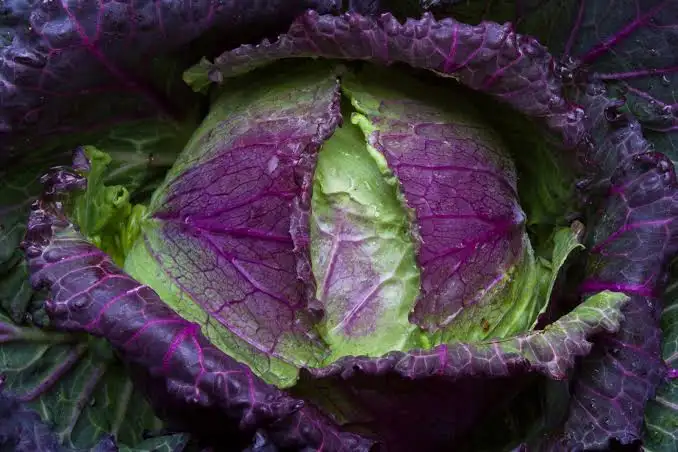
January King cabbage is a cultivar with intermediate morphology between Savoy cabbage and white cabbage. It is known for its large, boldly colored, crinkly outer leaves and longer growing season. The crinkled leaves are a deep green with purple veins and edges with the occasional dusting of grey. The densely-packed “head” can weigh from 3 to 5 pounds at maturity. While the outer leaves of January King cabbage are dark and magenta, the inner leaves are a bright pale green and are tender yet crisp. The colors of this winter cabbage variety will intensify following a frost. This cabbage has a sweet, mild flavor, that is also made better after an exposure to frost.
Also Read: Different Types of Heirloom Tomatoes
Red Cabbage

Red cabbage also called purple cabbage is a type of cabbage that resembles its green counterpart, with the main difference coming from its brilliant reddish-purple or violet leaves.Like Green cabbage it is rounded and wrapped in tightly wound waxy leaves. It has a peppery taste and crunch when eaten raw, but becomes sweeter and softer when cooked. Red cabbage lacks water weight, which makes its leaves chewier and coarser than Chinese cabbage varieties. The red colorings of this cabbage are due to the presence of anthocyanins. These plant pigments produce red, pink, violet and magenta colors within different parts of food plants plants.
Sprouting Napa Cabbage
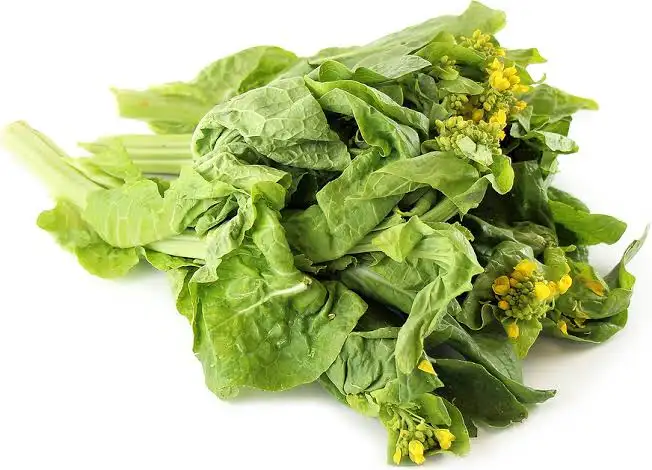
Sprouting Napa cabbage has smooth pale green leaves that are less furrowed than mature Napa cabbage. They grow in loose bunches from ribbed stems and are occasionally dotted with yellow flowering buds. It is milder and sweeter than the main cabbage head, but has the same refreshing watery texture.
White Cabbage
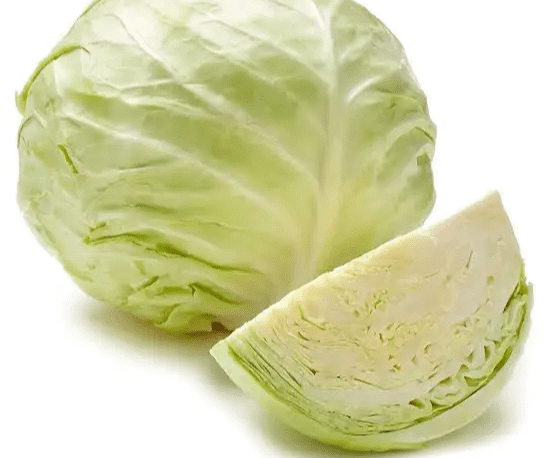
White cabbages also called Dutch cabbages because they originated from Holland. White cabbages have firm, tightly-packed, solid heads of leaves. They are not actually white; the leaves are very pale green with patches of white around the veins, though the outer leaves tend to be darker green than the ones inside which don’t get the direct sunlight. Their sweet, mild taste makes them excellent in salads such as coleslaw.
Also Read: Fast Growing Vegetables To Try At Home
Flat Cabbage
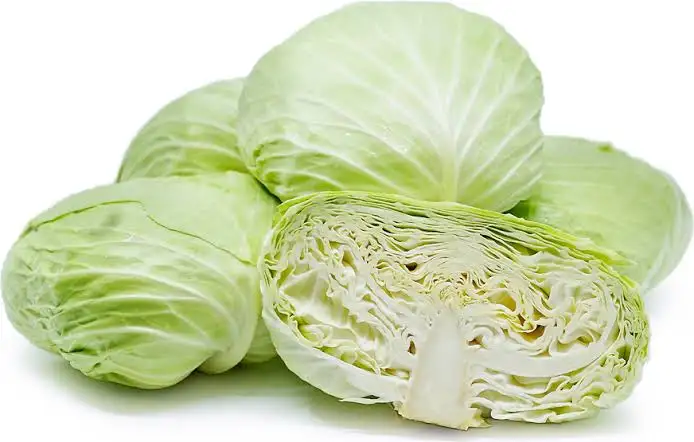
Flat cabbage has flat heads that consist of loosely packed, thin layers that are protected by outer leaves ranging in color from dark green to purple. Beneath the top layer of leaves, the leaves comprising the head are smooth and broad, light green leaves with small, white to pale green veins. Flat cabbage is crunchy, tender, and juicy, and is sweet with mild grass-like undertones. Flat cabbage pairs well with bell pepper, carrots, celery, green onions, garlic, ginger, peanuts, and meats such as pork, poultry, duck, beef, and fish.
Pointed Cabbage

Pointed cabbage, also referred to as Conehead cabbage has a cone-like shape, with compact green leaves. The pointed cabbage leaves are thin, have delicate white veins and an overall light green color. This cabbage variety offers a pronounced sweet flavor, which lacks the cruciferous taste of Green cabbage. Pointed cabbage can reach up to a foot in length, six inches in diameter at its base and weigh up to 10 pounds. Painted cabbage pairs well with bright citrus flavors, vinegars and vinaigrettes, sausages, pork belly and shoulder, grilled, smoked and fried white fish, apples, melting cheeses and chiles.
Michihili Napa Cabbage
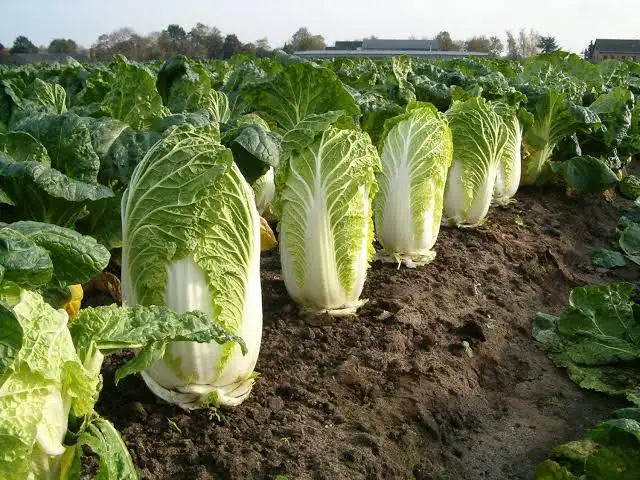
Michihili napa cabbage is a variety of heirloom napa or Chinese cabbage that forms elongated heads.The leaves of Michihili napa cabbages have a crinkled appearance with serrated edges and are white at the base, transitioning into a light green hue at the tips of the leaves. The outer leaves are also darker green than the leaves encased in the center of the head. Each leaf has a large main rib with a crunchy yet tender texture. The taste of Michihili napa cabbage is fairly mild and sweet, similar to celery or lettuce, though Michihili tends to have a stronger flavor than other varieties of napa cabbages. It pairs well with other vegetables, meats, or poultry.
Also Read: Different Types of Pineapples
Brussels sprouts

Brussels sprouts are compact rounded leaves tightly bound into individual spherical-shaped heads ranging in diameter of one to two inches when mature. Their leaves range from sea green to fern green, some varieties featuring blushed violet red tips. They offer the flavors of the earth and the bitter sweetness of cabbage. The younger the Brussels sprouts carry a sweeter more palatable flavor. Brussels sprouts can be added to casseroles, gratins, soups and they are a great addition to Winter roasted vegetable medleys.
Green Stem Bok choy

Green Stem Bok choy is also known as Shangai Bok choy, Green Bok choy, and Spoon cabbage for its unique pale green, spoon-shaped stems and leaves. This is a small cabbage variety with a bulb-like base consisting of clustered stems connected to loosely bunched, oval, flat leaves. The delicate leaves are light to dark green, crisp, and broad with round, even edges, covered in prominent, light green veining. The leaves and stems will keep 3-5 days when loosely stored in a plastic bag and kept in the crisper drawer of the refrigerator.
Danish Ballhead Cabbage

Danish Ballhead cabbage is a heirloom cabbages that are mild and tender. This is a great, general-purpose cabbage that is good for sauerkraut, coleslaw, or general cooking.The thick leaves can be sliced or chopped and used as a substitute for romaine in Cesar salad, braised, tossed into pasta dishes, soups, stews, egg dishes or simply sautéed with oil and garlic. It pairs well with garlic, sesame, lemon, chicken stock, soy sauce, oyster sauce, white pepper, mushrooms, onions, squash, and meats such as poultry and pork.
Also Read: Different Types of Citrus Fruits
Black Italian cabbage
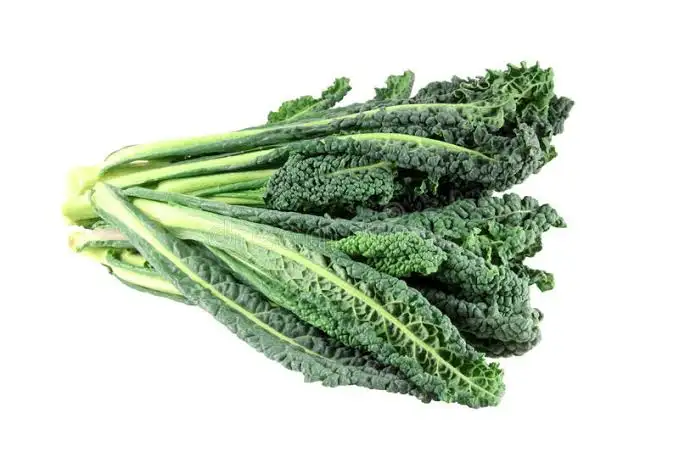
Black Italian cabbage, better known as Tuscan or Dinosaur kale, is an Italian variety found in the Tuscan region of Italy and is popular in restaurants in the United Kingdom and the United States. This cabbage has a thick central stalk and produces long, fat, spear-like leaves that have wrinkled, bubbled surfaces. As the leaves mature, they thicken, and stalks become tough. Black Italian cabbage offers a subtle peppery flavor with a tangy bite and sweet aftertaste. It pairs well with beans and pork.
Gonzalez cabbage

Gonzales cabbage variety is a green, early season hybrid that produces mini heads. The firm, softball-sized heads mature early-in just 50-55 days. Gonzalez hybrid cabbage was created for its mild, sweet flavor and texture, and is predominately used or best suited for both raw and cooked applications such as braising, stewing, grilling, stir-frying, and boiling.
Red Chinese cabbage

Also referred to as Red Napa or Celery Cabbage, has a compact, large and elongated head, with an oblong to oval shape. The white stems are smooth, crunchy, and firm with vertical grooves, and the thick white stems transition into prominent veins as they travel into the leaves. The leaves range in color from bright magenta to red and are crisp with a crinkled texture and ruffled edges. Red Chinese cabbage can be stir-fried with other vegetables and meats as a main dish, chopped and stuffed into dumplings, braised for a tender consistency, or tossed into soups and stews.
Further References
- Facts About Cabbage: https://en.m.wikipedia.org/wiki/Cabbage
- Health Benefits of Cabbage: https://www.healthline.com/nutrition/benefits-of-cabbage
- How To Grow And Care For Cabbage: https://www.almanac.com/plant/cabbage
- Cabbage Growing Guide: https://web.extension.illinois.edu/veggies/cabbage.cfm